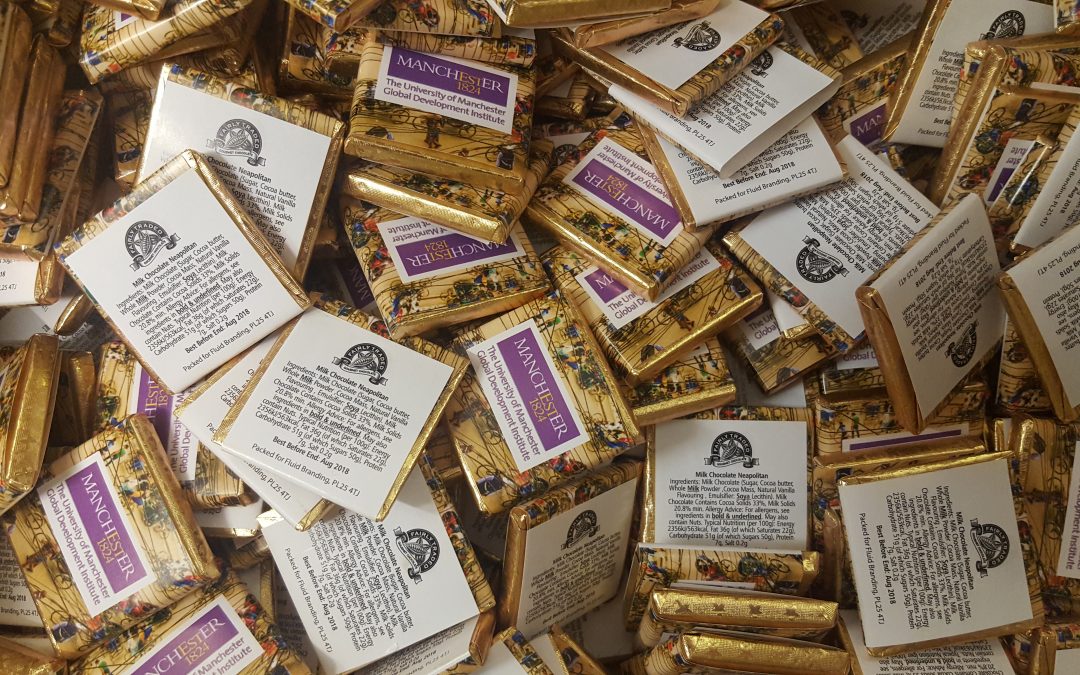As we at the Global Development Institute like a challenge, we decided to foray into several slightly unconventional research communications methods in the past month. As our experiments with Instagram and storytelling demonstrated, engagement with new channels will require adapting what you say and how you say it, but the why never changes.
The two media of our choice, Instagram and spoken storytelling, appear diametrically opposed. One is based on pictures and 15-second videos, very much a product of the 21st century. The other one is a time-honoured practice that is central to how we perceive the world and ourselves. Nevertheless, both start from the same premise: what is the story? What is the kernel of truth within pages and pages of research findings to be shared with a larger audience?
Instagram lesson 1: Rely on experts
Since researchers generally are not very good at brevity, Minna Lehtinen and Emma Kelly from our trusted GDI Communications Team were instrumental in distilling research into communication-friendly videos. The Instagram takeover on 11 October 2017 celebrated National Chocolate Week and used The University of Manchester’s official Instagram account to take users on a treasure hunt around our campus for fairly traded chocolate, prodded along by videos, pictures and polls all through the day.
Instagram lesson 2: Levity is good but don’t be afraid to tackle tough topics
The videos, a maximum of 15 seconds in length, shared chocolate facts: from fun trivia such as how the Aztec god Quetzalcoatl was shunned by other gods for sharing chocolate with humans to serious topics, including why most cocoa farmers have never tasted chocolate and why fair trading is important. Presenting communication-friendly facts does not preclude discussing issues that are complicated or difficult.
Instagram lesson 3: Condensing years of research into tidbits is hard but worth it.
Regular “Can you say that again, but faster?“ prompts from our comms experts proved instrumental in getting this researcher to get better at concision. However, though the how and what of what we communicated was different, the key message about considering development outcomes for cocoa farmers never changed. Participation in our “Do you buy fairly traded chocolate?“ poll as well as 67,000 views of our day’s work suggest that people appreciated this communication effort. Through these videos, we were able to direct users to other research communication, including blogs and papers, using this door opener to deepen engagement with cocoa research conducted at Manchester.
Storytelling lesson 1: Tell stories through people.
At the other end of the brevity spectrum is half-hour storytelling, implemented as part of European Researchers‘ Night/Science Uncovered at Manchester Museum on 29 September 2017. As the guidance available on turning research into stories is somewhat limited, I again made recourse to our trusted Comms Team‘s creativity and suggestions.
Amid the wealth of interlocutors who shared their time and expertise so generously with me during my research and fieldwork, I identified three people whose viewpoints and experiences could help me tell the wider story of cocoa sustainability. Doña Ana’s inspiring story as a resourceful, resilient cocoa farmer, Don Miguel’s constant battle with the system as the head of an NGO providing training and expertise to cooperatives, and Mr Andersen’s take as the owner of a small-scale chocolate company helped me bring out thoughts on certification, inequalities and ways forward for cocoa farming in particular and us human beings in general.
Storytelling lesson 2: People really like stories.
This may seem obvious to anyone who does not spend most of their time reading and writing academic publications, most of which leave a lot to be desired in terms of structure, flow and reader-friendliness. However, the storytelling task forced me to write shorter, clearer sentences, de-clutter my points to ensure that my listeners would not get lost in my convoluted thoughts, and continuously signpost them back to what the point of the story actually was. So why do I not do that in all my writing and presenting?
Storytelling lesson 3: Stories engage.
In this arena, people’s attention was focused all the way through, prompting deep follow-up questions on structural inequalities in the global trading system, improving cocoa farmers‘ lot, and ways for them to learn more about development matters. Making an effort to change the how and what of what you are telling people also prompts deeper questions into the why, and what people can do to change whatever prompted you to engage with the why.
Overall lessons
My take-away was that research communication can materialise in a myriad ways, shapes and forms. The new ways to communicate research will never replace PhD theses or research papers – rather, they are complementary, engaging people through new avenues and reaching audiences who may otherwise never have become privy to these conversations.
Call me naive, but in an era when universities are again facing accusations of operating in ivory towers, engaging students and the public in new ways is a good thing. It is also exactly what our institutions dedicated to sharing and producing knowledge need to be doing for the sake of social responsibility.

